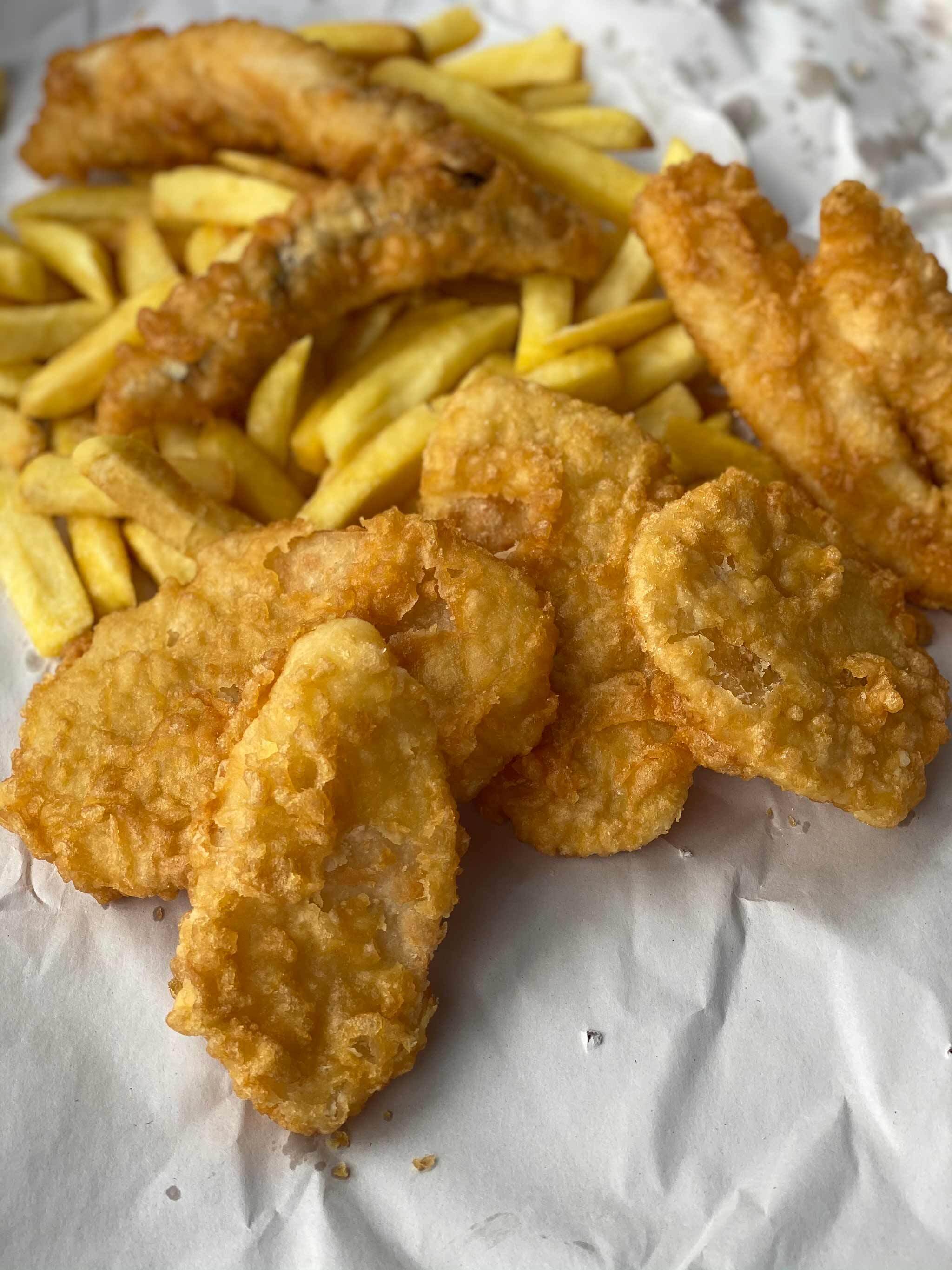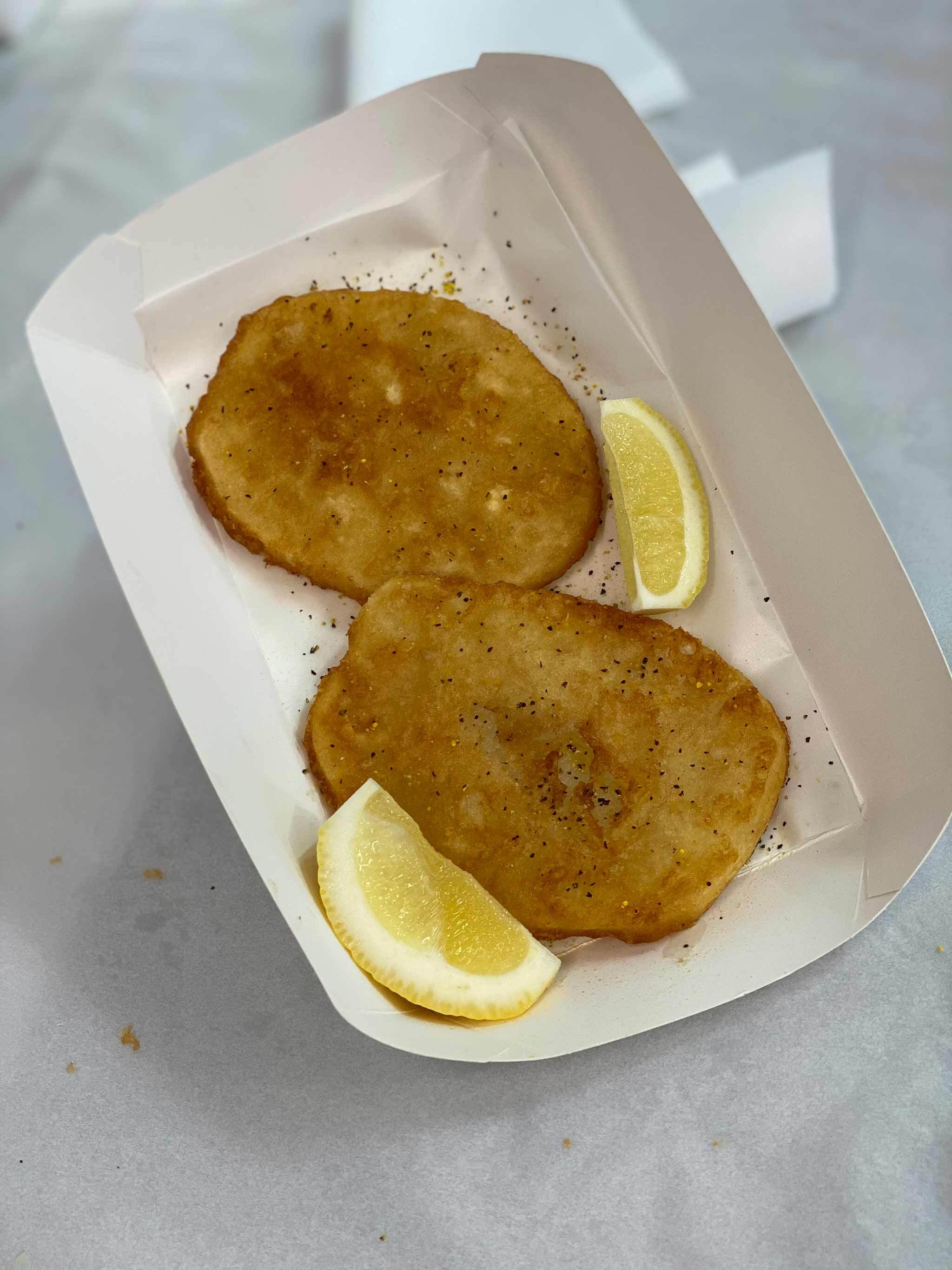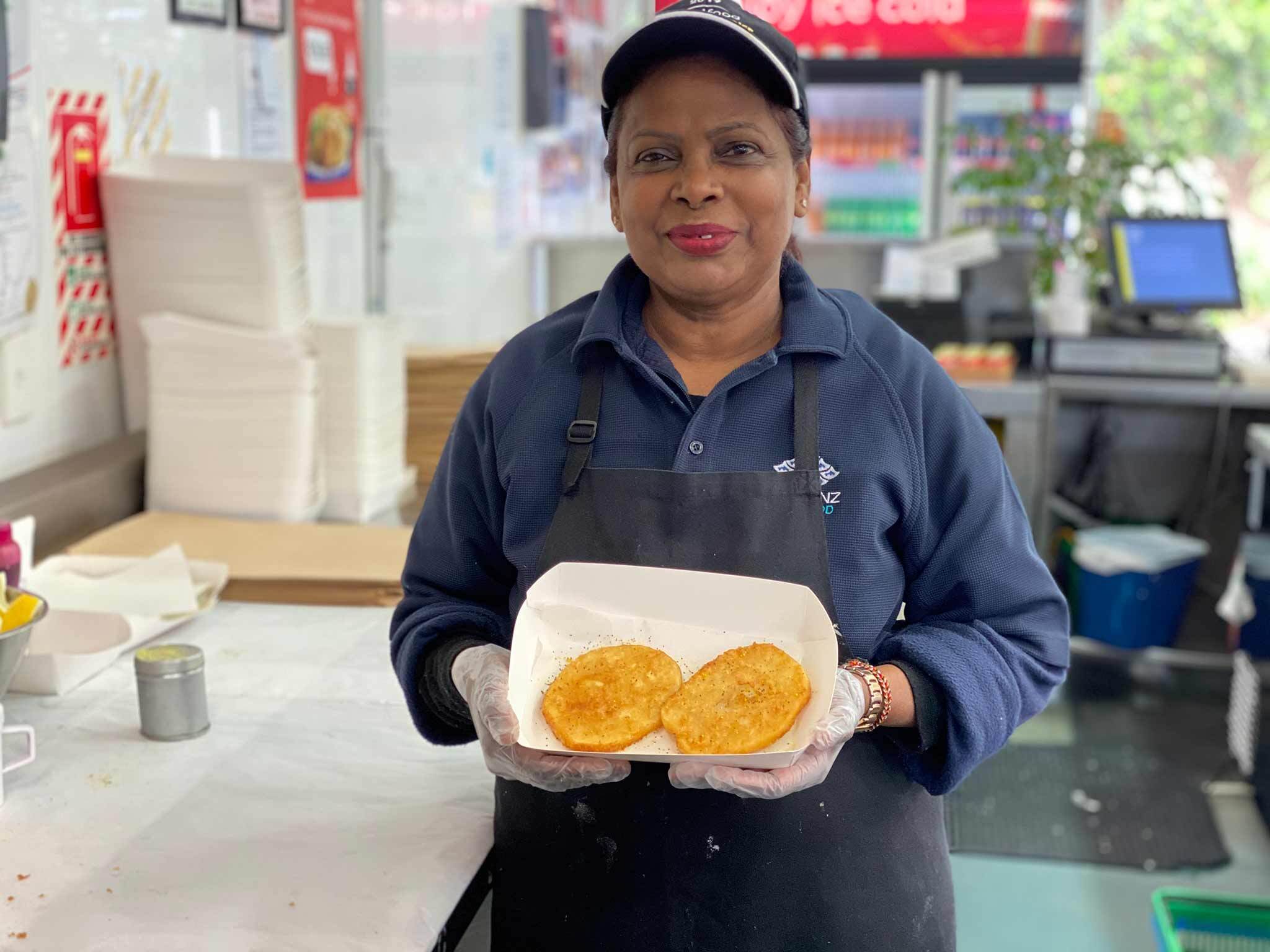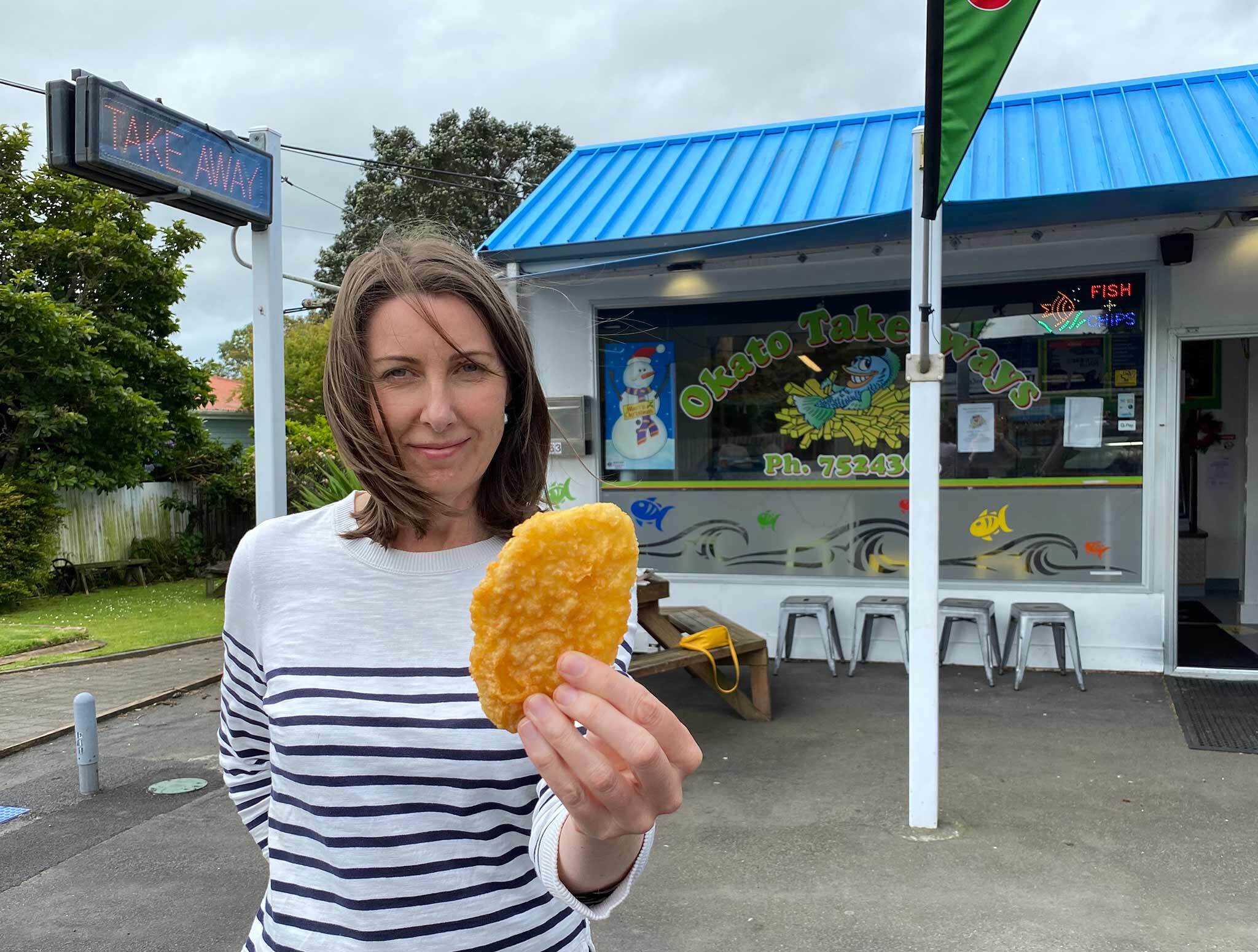The potato fritter: A history
A not-very-reliable history of the mysterious and marvellous potato fritter.
It started with a tweet: RNZ’s Megan Whelan, musing to the twitterverse: “…Why, when you buy a potato fritter in New Zealand, is there invariably two or three in the bag?”

This triggered an outpouring of responses, most expressing true, deep love of the potato fritter and genuine sadness when the extra fritter is not in the bag. Theories as to why the extra fritter ranged from “I thought they just liked me!” to “it’s just The Way”. The tweets were filled with nostalgia and tinged with longing. Many people feel, it seems, this is a marvellous and unique piece of Aotearoa food culture.
I wondered, though: where did the potato fritter – the version that’s available only in fish and chip shops – come from? And why is it such a specific, beloved item on a Kiwi fish and chip shop menu?
How could I have known this would prove such a mystery - much more than the ‘why the extra fritter?’ question (which I will get to).
The fish and chip shop potato fritter, to be clear on what we’re talking about, is a large slice of potato, about 1cm thick, covered in batter and deep fried. The batter and shape are what distinguishes it from being, as some proffer, simply a big chip. A fritter is its Own Thing.
The chip shop potato fritter (for which the standard price seems to be $1) is also completely different from what you get when you search for recipes for potato fritters to be made at home. The latter are grated or mashed affairs, with flavourings and onion and other additions, in the style of rosti or potato cakes or hash browns. They’re also delicious, but none are re-creations of the chip shop fritter.
So where does our potato fritter come from?
I consulted eminent Dunedin-based food historian, Helen Leach, who I’ve found knows everything about NZ food history, and if she doesn’t, she can find it out from her vast collection of historical food books.
Even Helen struggled with this one.
She unearthed a recipe for ‘Scots Potato Fritters’ in a book first printed in 1929, which called for slices of potato ‘about the thickness of a crown piece’ to be dipped into a mixture of breadcrumbs, ‘grated ham’ and egg, and fried. On the right track.
And then: potato paydirt. Helen emailed me this:
I found the Margaret Dods (Christian Isobel Johnstone was her real name) recipe for potato fritters on p.155 of her book The Cook and Housewife’s Manual, published in Edinburgh 1826:
Potatoes ‘may be dressed as potato fritters, by flouring the slices, dipping them in eggs and crumbs, and frying. They form a great addition to sausages, and pickled or red herrings with which they may be served.
This looks like a recipe that may go back as far as the introduction of potatoes in Scotland (my emphasis)
How about that! As soon as they got potatoes, Scottish people were making fritters.

This reference to Scotland is a fascinating link. The Scottish, it seems, may be the one people in the world who love the potato fritter even more than we do. In Scotland, it’s given its true place in the spotlight and simply called a Fritter.
And in Glasgow, they take it a step further – perhaps unsurprising in the home of the deep-fried Mars Bar – and enjoy a Fritter Roll. This double-carb fantasy looks to be a potato fritter or two, inside a soft bread roll, garnished with salt and vinegar. Which you have to admit in certain circumstances, would be pretty great.
Here in NZ there’s another interesting twist. The potato fritter appears to be a regional delicacy, featuring mostly in North Island and upper South Island fish and chip shops. An unscientific survey reveals fritters appear only sporadically in fish and chip shops south of Christchurch, and in Dunedin and Invercargill not at all. I’d love to know more about this, especially given the Scottish connection, which you’d think would place potato fritters firmly on menus in the deep south.
Whether via Scotland or not, we know fish and chips came to us with 19th-century British settlers. And, though this is just a theory, I think the potato fritter might have come to the fish and chip shop originally as a fish substitute.
Historian Te Awhina Arahanga sparked this idea. She wrote a book on the fish and chip shop: Two Fish and a Scoop: A Social History of Fish and Chips in New Zealand. She told RNZ’s Jesse Mulligan in 2017 that the chips were often the better part of the meal in the early days of fish and chip shops, and “sometimes if they didn’t have fish, they would cut patterns into the potatoes to make them look like fish”. Overseas fish and chip researchers also write about this.
It doesn’t seem that much of a stretch, to me, from a make-do fish substitute to the mighty potato fritter we all know and love.
(And did anyone else have this thought: perhaps the potato fritter was the very first vegetarian meat alternative? I’d take a fritter over a pea-protein burger, any day).
Now: to the mystery of the extra fritter. It’s the least mysterious part of this whole thing.
I spent an enjoyable hour with Rita Harris at Oceanz Seafood in Botany, Auckland, recently, discovering the secrets of a great potato fritter (see the video here). Rita’s been working at Oceanz for 14 years, and she proudly peels and cuts the potatoes by hand for her utterly delicious fritters, of which she sells 6 or 7 kilos’ worth every day. She is a true potato fritter expert.

It’s very important to cut the potatoes the right thickness, Rita says; not too thin, not too thick, to get the perfect texture. They can’t be soft or soggy, and they have to be cooked all the way through and crispy on the outside, fluffy on the inside. Rita gives her fritters a double cook, first low, then hot, in vegetable oil. It takes longer than cooking chips, but it’s necessary for the perfect texture.
When they’re perfectly golden, Rita drains the fritters and dusts them in salt and lemon pepper.
I’m not a regular eater of potato fritters, but I can tell you the two she made me did not make it far. They were the nicest morning tea I’ve had in a long time.
I ask Rita why there’s sometimes extra fritters with an order.
“Potatoes are not all one size”, she says. “Sometimes you get very small potatoes. And the middle of the potato is big, and on the sides it gets smaller. So [when that happens] we give two”.
She shows me an example from her bucket of potato slices. “See, this one is smaller - you can’t sell that for one dollar. So we put another one in”.
It’s simply an issue of fairness and value for money. She wants to give us our $1 worth.
At Okato Takeaways in Taranaki – which last year won the Supreme Award for best chips in the country – Jillian Moffit takes her tempura-battered fritters to extra crunchiness by battering them a second time, in her own special-recipe batter mixture made with three different flours.

Jillian also says offering an extra fritter is about value for money, and sometimes it’s about goodwill; the customer feels good when they get a little something extra. “It’s always been that way”, Jillian says. “It’s been that way since I was little”.
So there it is: a not-very-reliable history of the mysterious and marvellous potato fritter: a centuries-old recipe born of thrift and improvisation that became a Kiwi favourite.
And the answer to the extra fritter issue: it is, it seems, just The Way.
And in our world of mayhem and uncertainty, long may it continue.
About the author

Niki Bezzant is a freelance writer and journalist with a love of stories, science and sriracha.